Monthly Diary 2025
Monthly Diary 2025
November 2025
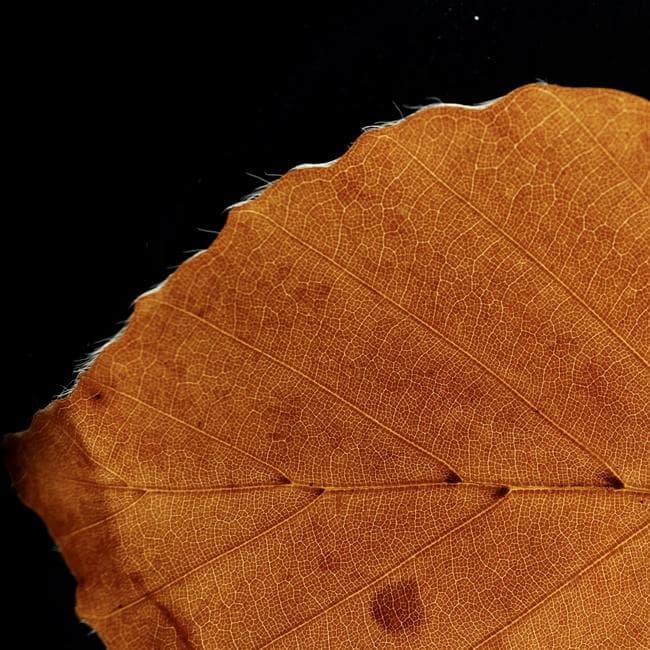
Just look at the detail of this beech leaf, collected from the Green, photographed with a flash using a macro lens. You can see some white hairs on the edge of the leaf, which are remnants of when the leaf was young and quite hairy. More impressively though, is the intricate network of little veins (actually called veinlets) that criss-cross between the larger veins and form an amazing pattern across the leaf. It really demonstrates that even the small things in nature are beautiful. On a practical note these veinlets and veins are essential for the survival of the leaf as they transport water and food, and this in turn allows the leaf to grow and do all the amazing things that leaves do. I also think it would make a pretty impressive jigsaw!

One bird that is a frequent visitor to the Green is the lovely goldfinch. You can see them most times of the year and the other day, there was a small flock of them flitting amongst the hawthorn. They have such lovely markings and you can clearly see the bright yellow wing bar glistening in the sunshine. Unfortunately the red markings around the face were in the shade and so are a bit dull. Never mind, it just highlights the challenges of trying to photograph something that doesn't want to keep still!
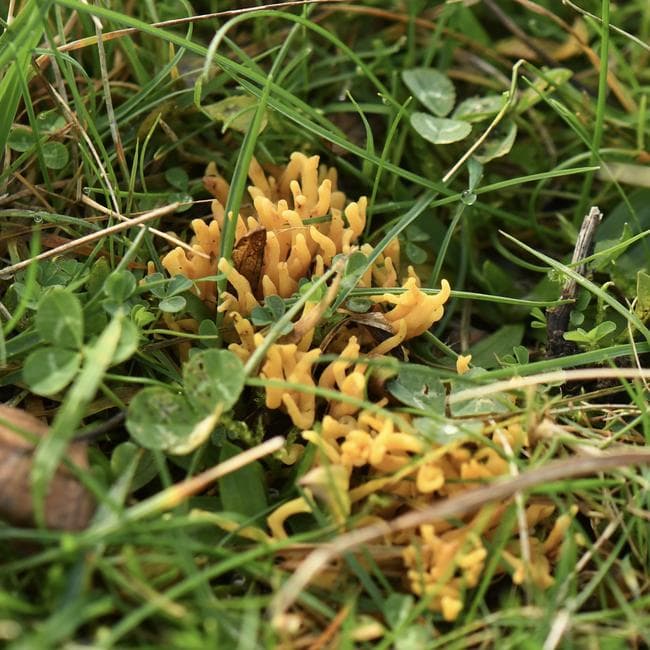
Earlier on this month we were very lucky to have Beverley Rhodes, a fungi expert, come and do a fungi survey of the Green. Amazingly, we found 32, different species, many of which are specific to a grassland habitat. These include the lovely waxcaps (see last month's post) as well as a yellow coral, as shown in the photo. This fungus is quite small (only a few centimetres wide) and the yellow finger-like projections that peep through the grass are usually branched at the ends. It just goes to show that not all fungi look like the toadstools that we are more familiar with!
October 2025

I'm sure most regulars to the Green will know that the cattle were taken off the Green earlier on this month. Once again they have done a brilliant job in grazing the meadow and this will ensure that we will have a good display of wildflowers next year. The cattle were a lovely bunch this year and I really enjoyed seeing and saying hello to them. A huge thanks to the farmer for putting them on the Green and for looking after them whilst they stayed with us.
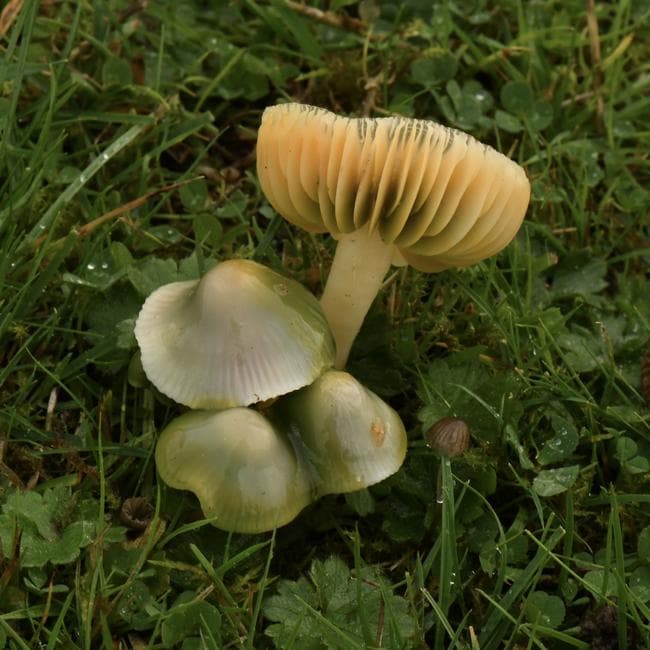
It's definitely Autumn when the fungi, especially the waxcaps start appearing on the Green. Waxcaps are a grassland species of fungi that only grow on undisturbed meadowland, and so we are very fortunate to have them. You can read more about the different fungi on this website's fungi page. The waxcaps are absolutely beautiful and come in a range of colours from bright red to almost pure white. They are now starting to appear, so do keep an eye out for them. So far I have seen white, yellow and green ones, but not too many red ones. Here is a cluster of the gorgeous parrot waxcaps, which start off green, but turn yellow as they grow older. They also change shape, which makes ID quite a challenge — but that's fungi for you!
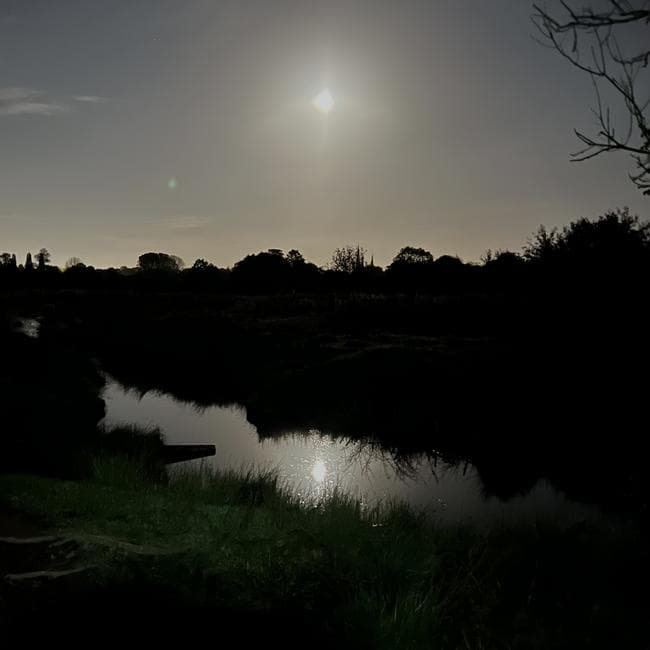
How about this for a mindful moment — a full moon reflection on Leomansley Brook? Sometimes it's just worth being on the Green a bit later than usual when you can enjoy the peacefulness and tranquility of the space. The whole experience was made even better, by a tawny owl calling nearby. How wonderful is that?
September 2025

Now this is a sight you don't normally see! On a recent bird survey of the Green, we were amazed (and slightly confused!) to see this sparrow sized bird in one of the trees on the edge of the Green. What is it? A finch of some sort, but nothing that we normally see in the UK. After taking a photo and having a bit of a trawl on the internet, I came to the conclusion that this is a female zebra finch, native to ..... Australia!! What a beautiful little bird and what an amazing beak. She must have been a captive bird that escaped from a cage or aviary and is now trying to fend for herself in the wild. Good luck little one, although I can't help but think it will be very difficult for her to survive the winter.
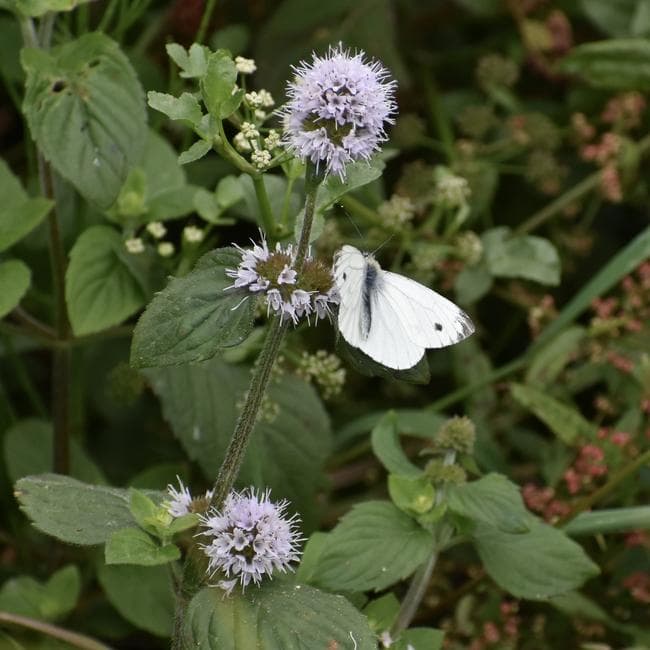
One plant that is still flowering in September is the wonderfully aromatic water mint, which is loved by many invertebrates and is an important nectar source this time of the year. The water mint grows in profusion on the wet side of the Green and whilst standing by a large patch, I saw three different species of butterfly, including this green veined white, feeding on the flowers. There were also numerous bumble bees, solitary bees and hover flies grabbing a meal — in fact the air was positively alive with their buzzing!

I think you'll agree that this is a bumper year for fruits and berries and the hawthorn bushes on the perimeter of the Green are no exception. Their red haws are dripping from the branches like jewels and look glorious in the autumn sunshine. On a more practical note, these berries are a very important winter food for many birds, including thrushes, blackbirds as well as over-wintering visitors such as redwing and fieldfare. At the moment if looks like they will all have plenty to eat!
August 2025
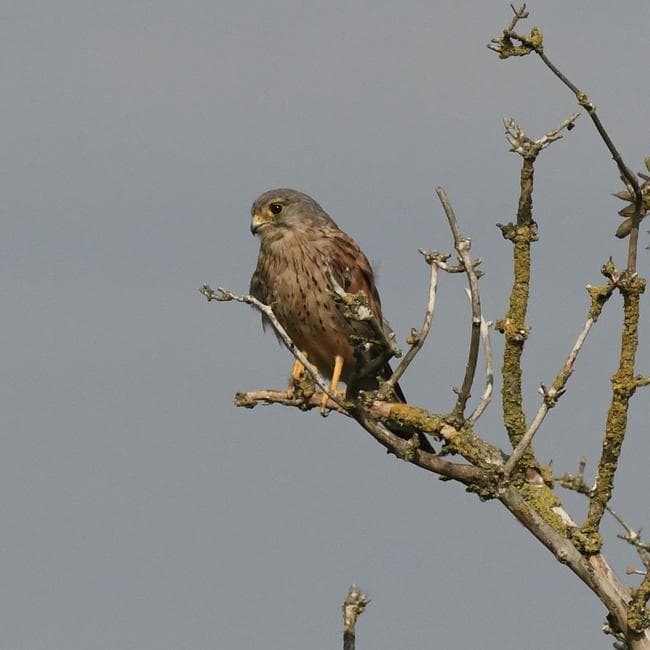
During a visit to the Green earlier on in the month, I came across this beautiful male kestrel, who was obligingly perched on a bush and didn't even bother flying off, when I got a bit closer. You can really see the wonderful details of this bird — the grey head, the (very curved) beak, the beautiful plumage and bright yellow legs. Unfortunately, kestrel numbers have declined in recent years and so it's good to see them on the Green. I think you'll agree, he is a stunning bird!
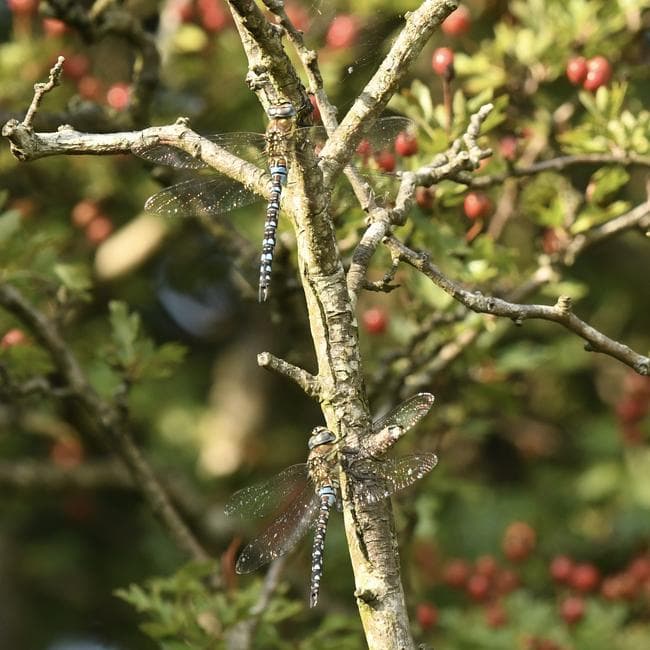
With the warm, dry weather this month, there seem to be a good number of dragonflies on the Green. I've seen a number of common darters by the brook, but they have been whizzing around too much to get a decent photograph. However, I was fortunate enough to come across these two male migrant hawker dragonflies that were resting on a tree branch. I love the dark blue spots on their abdomens and the way the sun shimmers on their wings.
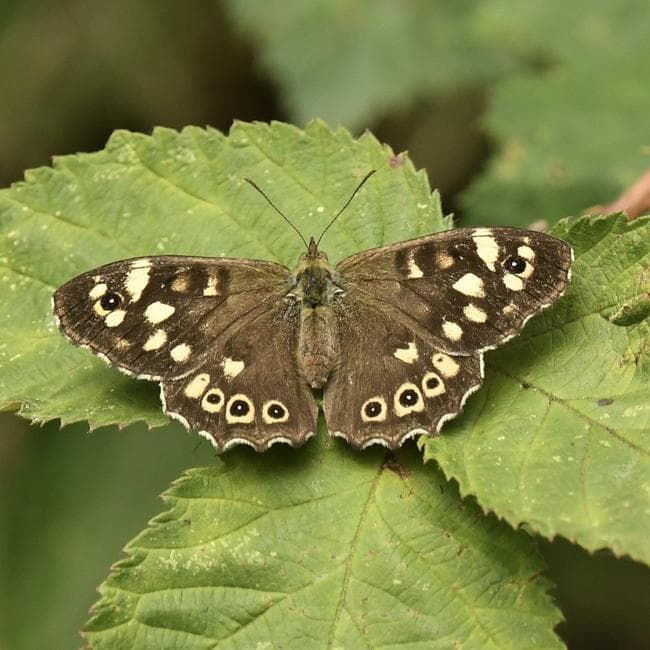
Earlier on in the month, a few of us undertook the Big Butterfly Count and recorded 37 butterflies across 7 different species. One of my favourites was the speckled wood, which can often be found along the hedgerows of the Green and on the bramble bushes. Whilst it's not the most flashy or colourful of butterflies, I do love the contrast of the gorgeous creamy spots against the chocolate brown wing. Absolutely beautiful!
July 2025
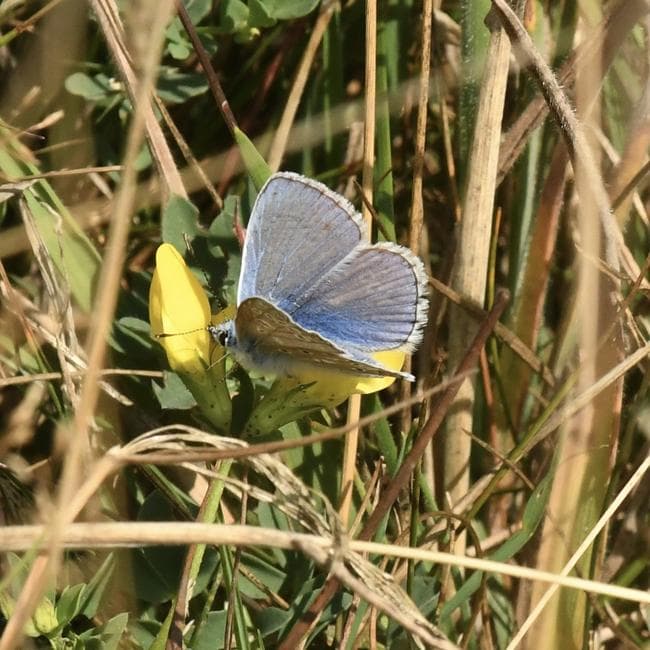
July (and early August) is definitely butterfly season and a good number can be seen on and around the Green. I'm not sure if I have a favourite, but I was delighted to see this male common blue butterfly feeding on some bird's foot trefoil. Unfortunately, common blues are not as common as they used to be, so its good to see some on the Green. The upper wing is a blue colour, but the intensity varies depending on the age of the butterfly. I suspect this one is an older specimen and its blue colour is starting to fade. The underwing, which you can just see, is very different having a variety of black and orange markings and can be very helpful in distinguishing it from another blue butterfly, the holly blue.
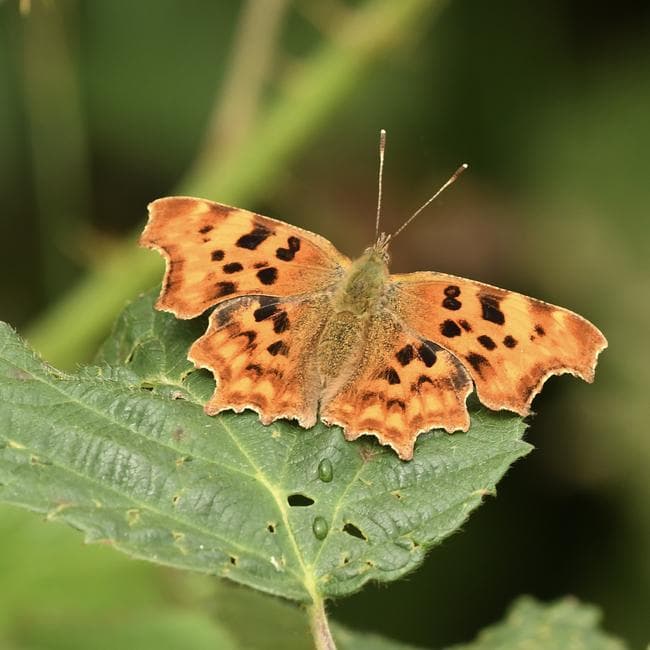
On the topic of butterflies, how about a gorgeous comma butterfly? Just look at the scalloped shape of the wings, and the lovely orange and brown markings. They love the bramble and can often be seen feeding on the berries, well into the Autumn. Why not spend 15 minutes on the Green doing the Big Butterfly Count? You have until 10th August and let us know what you find!
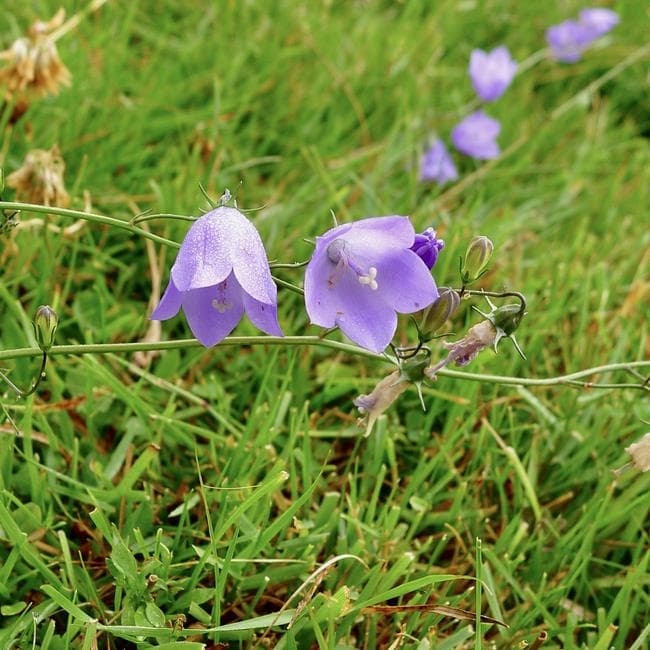
I'm sure you will have noticed that many of the meadow flowers have now finished flowering but fortunately there are still some putting on a show. One of these is the delicate harebell, whose blue head nods about on the summer breeze. They grow on the drier parts of the Green and are an important nectar source for insects at this time of the year. I always find it surprising that these delightful plants are surrounded by myths and folklore and go by a variety of names including fairy bells (as it was thought fairies slept in them) and witch's thimble. Think I'll stick with harebells!
June 2025

For those that frequent the Green, you will know that the cattle arrived in early June and have settled down nicely. They are now busy munching their way through the vegetation and performing the vital role of maintaining the meadowland and its wonderful flora. I was therefore thrilled that, on a recent plant survey undertaken by the very knowledgable Beverley Rhodes, an impressive 120 different plant species were recorded. This just demonstrates how biodiverse the Green is and how important the cattle are in maintaining this habitat!

Well, a June post would not be the same without mentioning the orchids. I think you will agree that they have put on a wonderful show this year? The two main species that we have are common spotted and southern marsh orchids and every year they seem to increase in numbers and spread over a wider area. This is brilliant news and shows that the protective fencing that we put up is helping them. Let's see what next year brings!
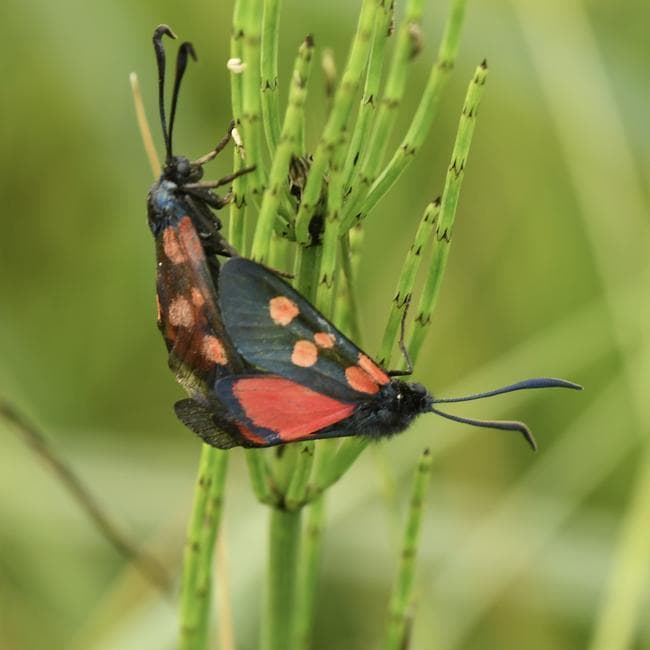
With the warm weather and sunshine, the butterflies have taken to the wing and many can be seen fluttering around and feeding on the plants. Now this striking one actually isn't a butterfly but a rather beautiful five-spot burnet moth. It has, as you might expect from its name, five bright red spots on a dark black forewing. You can also see some of its bright red hind wing, which most certainly makes it very distinctive when it flies. The bright red colour and spots, whilst stunning, actually warns predators that it is poisonous. Burnet moths do in fact contain hydrogen cyanide, so predators beware!
May 2025
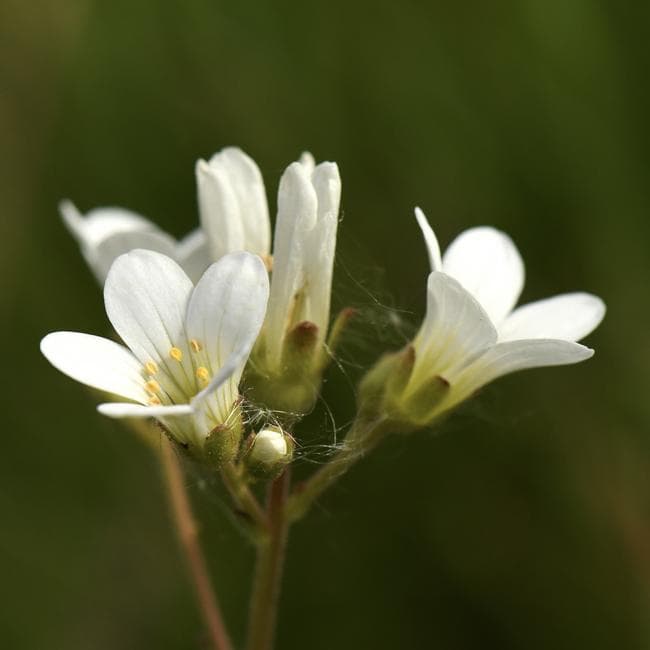
We are lucky to have some meadow saxifrage growing on the Green and I was delighted to find some flowering and looking especially elegant in the May sunshine! Unfortunately meadow saxifrage is a species that is in decline nationwide, mainly due to the disappearance of old grasslands, so it's important that we look after what we have. Just look at the delicate, almost waxy white petals leading down to a yellow centre. How beautiful is that?
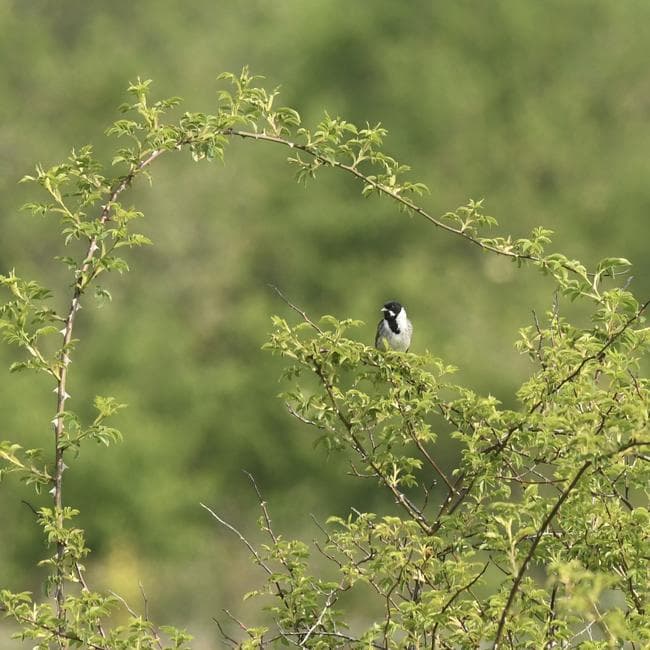
The wet side of the Green is home to a number of reed bunting and they are very busy at the moment nesting and raising their young. They have a quiet song, so it's not always easy to hear them, but the male is quite easy to see having a very distinctive black head and bib. They are quite visible at the moment as they like to sit on the bramble and sing - just as this one was doing!

With the warm weather in May, some dragonfly have been out and about enjoying the lovely sunshine. I was fortunate to spot a beautiful male broad bodied chaser, who was whizzing about and then decided to obligingly sit on the rush, for a photo shoot! He has a glorious powder blue abdomen, with yellow spots along the edges. And then I saw.....

a female, who looks a bit different as she has a beautiful golden-brown abdomen, which really glows in the sunshine. I think you'll agree that she is an absolute stunner and then to crown it all, they got together and mated - wonderful!
April 2025
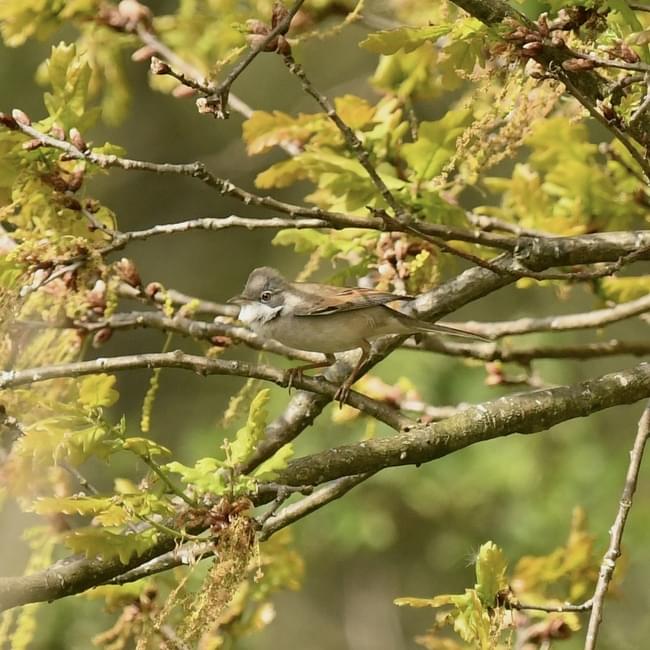
Hooray, the whitethroats are back! As you can see from the photo, these delightful little birds are so called because they sport a rather dashing patch of white on their throats! They are a summer visitor who sensibly overwinter in Africa and then return to the UK in April. They like the scrubby side of the Green, where there is lots of bramble and small bushes, where they will nest. They have a very distinctive scratchy song and I was thrilled to see and hear at least three breeding pairs, so hopefully we will have lots of baby whitethroats in a month or two!
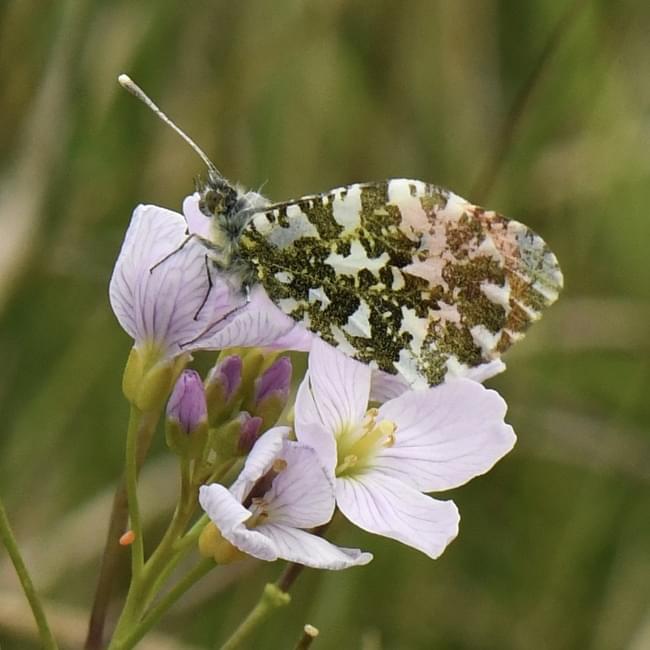
With the warm weather, the butterflies are out and about and one species that you should see is the orange-tip butterfly. The males have a distinctive bright orange tip to the upperwing, which the females lack, but they both have this gorgeous mossy green pattern to the underwing. This male is feeding on one of their favourite plants, ladies smock (or cuckoo flower), and for the eagle eyed, you may see a small orange blob on the lower left hand side of the plant. This is the egg of the orange-tip butterfly, which will hatch in about a weeks time and the resulting caterpiller, will then feed on the plant. After about a month it will pupate and then emerge as an adult next year. How amazing is that?

You would be forgiven for thinking this little plant is a speedwell, but it is in fact a close relative, known as brooklime. Apart from having fleshier leaves and a hollow stem, it also lives in a very different habitat to speedwell, namely on the wet ground near to the brook. I just love the intensity and delicate blue of the flowers. A little stunner!
March 2025
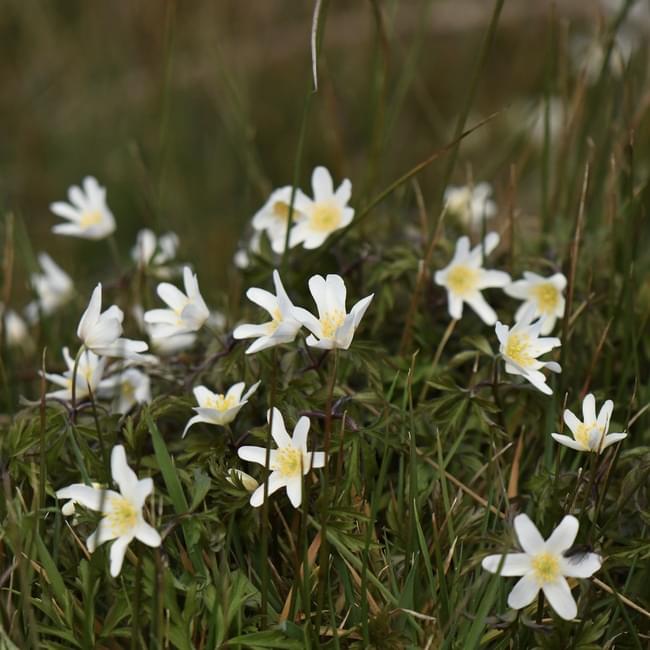
A diary post at this time of year, would not be the same without a photo of the beautiful wood anemone. We are very lucky to have a few patches of this gorgeous plant (one of my favourites, I have to admit) growing on the Green. They like dampish ground and so are found near to the back gate on some of the damp grassy tussocks. I think you'll agree that their flowers are just stunning and a reminder that Spring is here! These plants are normally associated with ancient woodland, so I'm not quite sure why they grow on the Green, but I'm more than happy to have them!
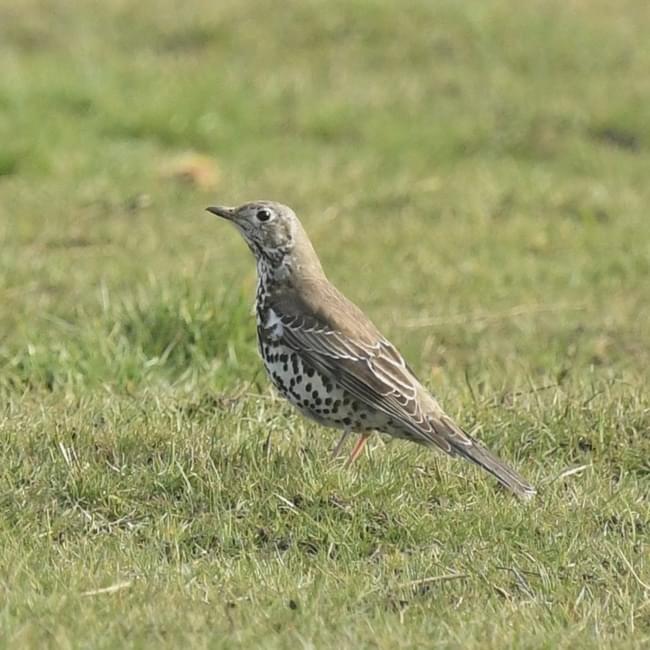
Last month I talked about song thrushes, and this month, I give you the mistle thrush! At first glance, you would be forgiven for thinking this is a song thrush, but a closer examination does show some differences. The mistle thrush is a larger, more slender bird with greyer plumage, compared to a song thrush. The spots, are also a different shape - more rounded on the mistle thrush, compared to the arrow shaped spots of the song thrush. The mistle thrushes on the Green are usually found feeding on the meadow area, where the grass is a bit shorter and it is here that they will be hunting for invertebrates.

The Green is also home to a few patches of gorse and at this time of year, you can't really miss it, with it's bright yellow flowers gleaming in the sunshine. Whilst I was stopping to admire the flowers, a hoverfly came whizzing in and started to feed. This is a timely reminder of how important these flowers are as a nectar source for early flying insects and so it is a good thing that we have some gorse on the Green. After visiting a few flowers to feed, the hoverfly then flew off to do whatever hoverflies do!
February 2025
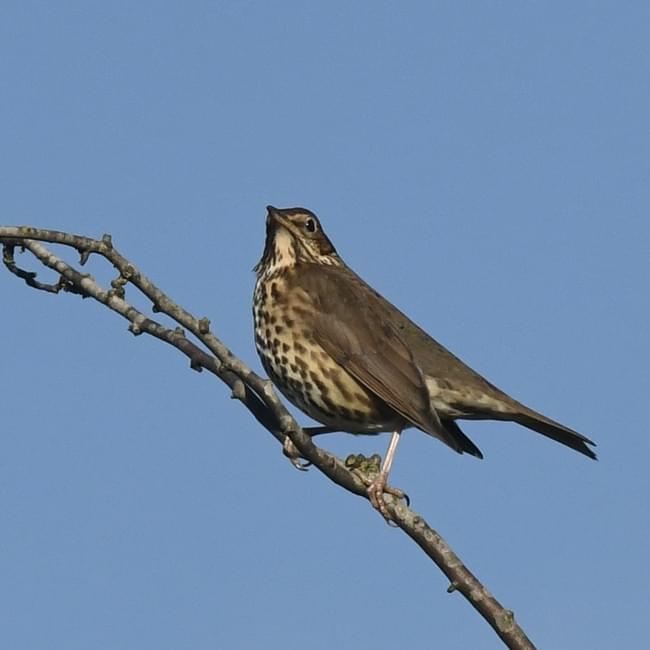
After a dreary start to February, it's lovely to feel a bit of sunshine and warmth over the last week. It certainly feels that Spring is in the air and the birds most certainly seem to think so; not only are more bird species starting to sing, but they are getting louder too! So it was lovely to see this beautiful song thrush, sitting on top of a hawthorn bush, proclaiming his territory. What a handsome chap he is too — just look at those brown heart-shaped spots against the warm creamy feathers. You can also see the white patch under his chin, which is something that isn't always visible.
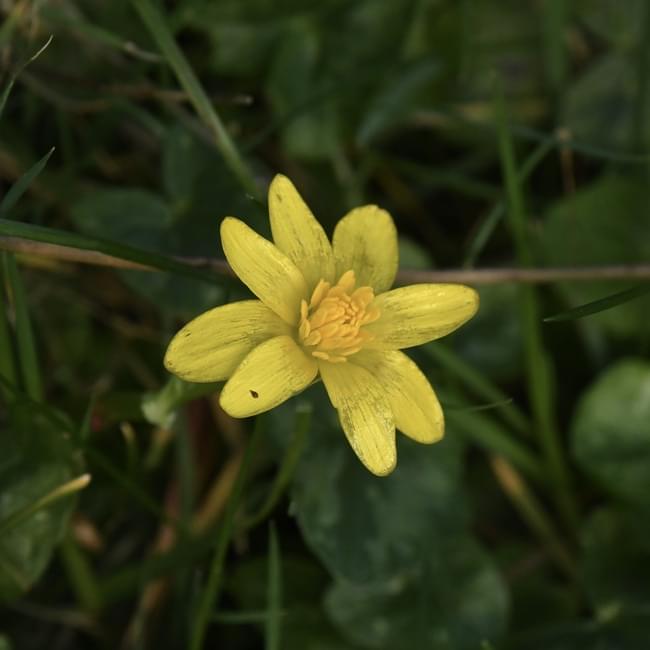
Whilst I saw one or two lesser celandines flowering in December, it is good to see that towards the end of February, many more are beginning to flower and soon there will be lovely yellow carpets of them brightening up the day. Not only do they make me smile and feel better, but they are also an important nectar source for early flying invertebrates, especially some of the bumble and solitary bees.
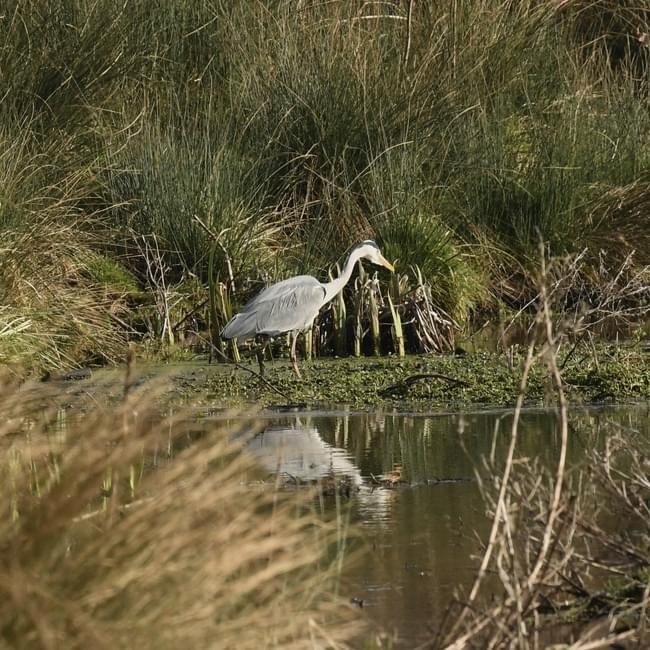
A heron was also enjoying the warm sunshine by the brook, whilst fishing for an unsuspecting frog or small fish. It's amazing how still they can stand and for such a long time, before suddenly lunging to catch their prey.
January 2025

Who doesn't love a robin? This chilly chap (or chapess) was all puffed up, in order to keep warm, during the recent cold snap that we had earlier on in the month. His red breast was certainly standing out amongst the grey branches. Amazingly there are 7 million breeding pairs of robin in the UK, and its nice to know that a few of them call Pipe Green home.
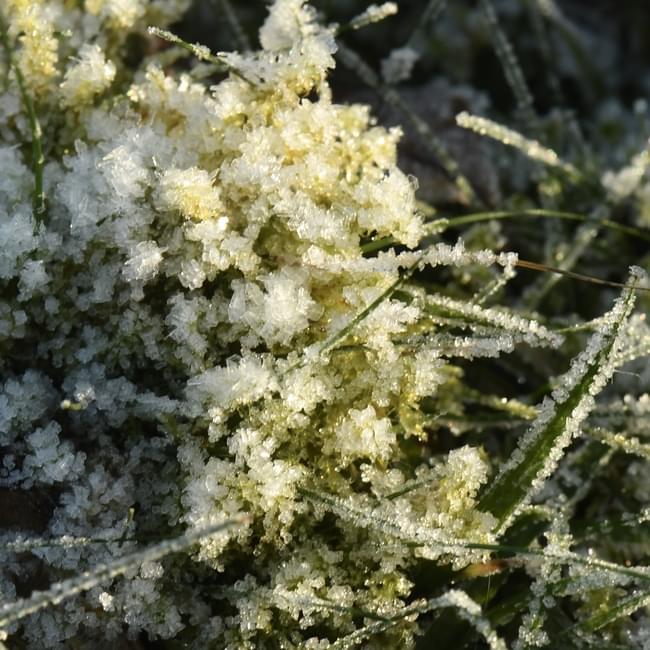
One thing that I like about the cold weather, is when the hoar frost settles on the vegetation and transforms it. Not only do you see structures and details that you would normally ignore, but when the sun comes out, it all becomes magical and sparkly. So here is a small piece of moss, which you wouldn't normally look twice at, being transformed into a shining jewel!
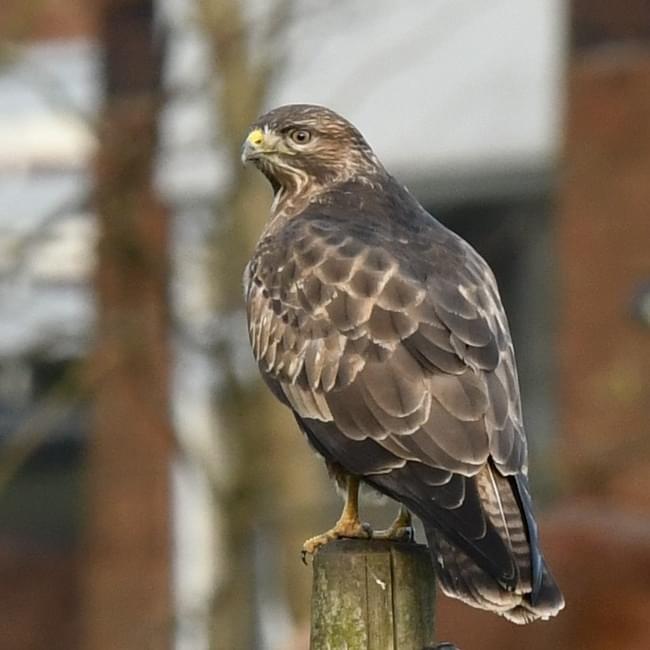
Buzzards are a fairly common site on the Green and can often be seen soaring overhead or sitting on the telegraph poles. I was therefore thrilled to get this shot of such a magnificent bird. Now admittedly this photo wasn't taken on the Green, but as it was taken whilst I was walking to the Green, I reckon it still counts! Just spend a minute admiring the details; the beautiful feathers, those impressive talons, the curved beak and oh yes, what about those eyes looking for anything that moves? Wonderful stuff!